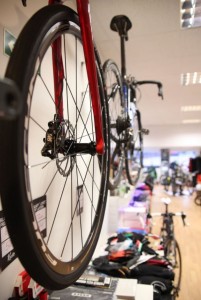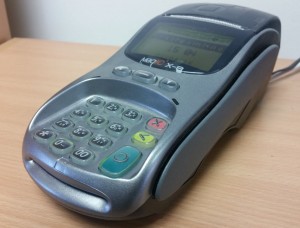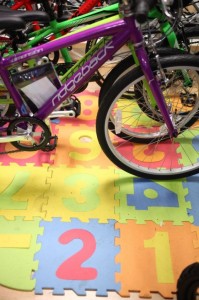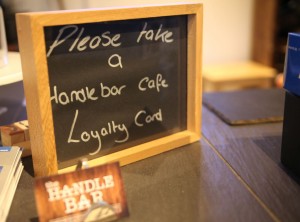There are only three ways to grow your bike shop, part two: the numbers!
By CyclingIndustry.News regular Jay Townley
As we said in the first article in this series – no matter how sophisticated  the technology and internet connections shoppers and competitive retailers use there are still only three ways bike shop retailers can actually grow their businesses:
the technology and internet connections shoppers and competitive retailers use there are still only three ways bike shop retailers can actually grow their businesses:
- Increase the number of customers
- Increase the number of transactions
- Increase the value of the transactions
Low Tech, High Return! The three-ways are of vital importance to bike shops today because they are relatively low technology and low cost solutions that bring with them high returns in revenue and net-pre-tax profit growth.
This isn’t to say that bike shops should not invest in high tech solutions and the best sales associates and wrenches they can recruit, but the three-ways are the means by which bike shops will be able to afford these equally vital investments going forward.
Increasing the number of customers is a challenge that all retailers in the U.S. and the UK are struggling with. Flat sales in the U.S. have been compounded by the fact that shoppers visiting brick-n-mortar stores have been declining steadily over the past six-years – as consumers online purchases have steadily increased. 
It’s time for bike shops to stop complaining about what they can’t control and start working on what they can control to actually grow their businesses!
How to sell more adults that visit your bike shop – but buy from another channel of trade!
Increasing the number of customers a bike shop does business with is in two distinct parts. First, is increasing the close rates of those shoppers that already come into a bike shop and second is attracting more shoppers that normally would not visit a bike shop – a subject we will cover in future articles.
Our research shows that 45 percent, or 4.8 million of the 10.7 million adult Americans who own a bicycle and who shopped a bike shop ended buying a bicycle as shown below.
Number of Adult Bicycle Owners Who Visited a Bike Shop And What Retail Channel They Purchased From After Visiting, 2014
| U.S. Channel | ||
| TOTAL Visitors | 10,738,000 | 100% |
| Discount/Mass Merchant | 3,196,000 | 30% |
| Bike Shops | 4,818,000 | 45% |
| Full-Line Sporting Goods | 634,000 | 6% |
| Online | 217,000 | 2% |
| Specialty Outdoor | 258,000 | 2% |
| Other Channels/Locations | 1,615,000 | 15% |
Source: Gluskin Townley Group Research
The rest of the story and the opportunity – 5.9 million or 55 percent of the 10.7 million adult Americans who own a bicycle that visited a bike shop are potential conversions that bike shops can tempt away from the other channels of trade!
In a time when fewer people are walking into retail stores, a total of 10.7 million adults who already own a bicycle walked into an American bike shop to at least look around.
Now this absolute number may have come down since 2014, but the opportunity is by our estimate over 5 million “shoppers” who own a bicycle, and who walked through the front door. Bike shops have an opportunity to convert these by taking the sale for a bicycle away from a competitor and turning them into customers.
How is where most bike shops have to make a no-cost cultural change in the way they are now doing business. 
Let’s look at these numbers at the individual bike shop level. Using the U.S. National Bicycle Dealers Association (NBDA) Cost of Doing Business 2014-2015 Study as our source, we estimate that the typical (median) U.S. bike shop was visited and shopped by 2,685 adults who own a bicycle, out of which about 1,200 or 45 percent actually purchased a bicycle from a bike shop, keeping in mind that they may have visited multiple bike shops on their path to purchase.
The opportunity we can quantify for every bike shop in the U.S. is approximately 1,480 adults, or 55 percent of the adults who own a bicycle and who visited a bike shop – but decided to walk out without buying and purchased a bicycle from another channel of trade (as seen in the table above).
So, how can bike shops convert these adult visitors – that looked around and decided, for whatever reason, not to buy a bicycle from a bike shop? To start with, and as found in more detail in our first article in this series – be nice and openly welcome everyone into your bike shop!
Remember, we are talking about approximately 1,480 adults who already own a bicycle who walked through your front door into your bike shop. That works out to 123 shoppers per month and 31 per week who you have the opportunity to engage and convert – and it isn’t costing you anything to get them into your shop.
What is their value to your business? Our research found that the average amount spent on the latest new bicycle was $595 for all channels of trade. Using this average all 1,480 visitors are worth $880,600 – per bike shop – per year.
I know some of you are saying – “…wait a minute…we don’t carry or sell new bicycles that retail for $595! While it’s not always about the retail price, consider that at least some of the adults who looked around and than left without buying may have done so because of “sticker-shock”.
If being an “exclusive” club that sells only higher priced bicycles is working for you – great and may you have success. However, the majority of bike shops are struggling and find themselves serving fewer and fewer customers each year – and they need to change the way they are doing business – including stocking and selling mid and even lower-priced Urban, City and Comfort bicycles. Keep in mind that you also have to make a clear net profit on the sale of all new and used bicycles at all price points.
Generating an additional $170,000 in revenue per year by closing one more a day.
Now we know you can’t stop and convert all of the shoppers that walk out of your bike shop – but if you could convert at least one per day – adding one more sale at the average of $595 would result in 288 additional new bicycles sold by your bike shop and would result in $171,360 additional gross revenue at an average of $595 per unit generated by your business per year – just by changing the way you greet and talk to and relate to shoppers that enter your store.
If you and your staff can’t make this small, easy change you probably won’t be able to implement and take advantage of this opportunity to increase your bike shops number of customers. However, if you can make this small, easy no cost change, you and your staff can generate real growth in gross revenue and net-pre tax profit.
Increasing the number of transactions goes hand-in-hand with increasing the number of  customers, but the most powerful application of this retail function is increasing the number of transactions a bike shop does with existing customers.
customers, but the most powerful application of this retail function is increasing the number of transactions a bike shop does with existing customers.
We laid out various methods for achieving this objective in the first installment, and we said the 80-20 rule is alive and well in specialty retail and according to the experts the typical retailers annual revenue comes from 20-percent of its customer base.
The focus of increasing the number of transactions is the 80-percent of a bike shops customer list that are infrequent, some-time purchasers at best and most likely AWOL after the initial transaction.
Assuming the typical American bike shop has a list of 6,000 customers (you can use your own total number of customers on your store list). 20% results in 1,200 active customers who are generating the largest portion of your annual gross revenue.
You can plug in your own average sales ticket amount, but for this example we are going to use the average amount spent on the latest new bicycle of $595 for all channels of trade that we used previously.
The objective is to reach out to your store list of 6,000 customers to increase the number of sales transactions, including service to 25-percent of your base, or 1,500 or more active customers – an increase of 300.
What’s the bottom line? Using the average amount spent on new bicycles of $595, an additional 300 transactions would result in an increase in gross revenue of $178,500.
We are using additional bicycle sales for this example, but you can actively reach out and promote an accessory category or a tune-up with a gross value of $100 and the increase, based on a pick up of 5-percent, or 300 additional transactions over the base of 1,200 will result in an increase in gross revenue of $30,000.
There is a cost associated with increasing the number of transactions with your existing customers, so the net result will be your gross margin on new bicycle sales and accessory and service sales. This also means you will want to carefully consider and calculate discounts and specials when crafting your promotional outreach to make sure your bike shop realizes both a gross and net-pre tax profit increase.
Increasing the value of each transaction is all about upgrading and add-on sales. Many specialty bicycle retailers and sale associates are reluctant to “sell-up” or suggest add-on items – and while we agree both have to be done carefully and with some skill, we also know that no retailer or sales associate is going to sell today’s consumer anything they don’t want!
We covered methodology in the first article in this series and urge you to build up-grading and add-on sales into your bike shops sales training and education for all sales associates and service writers.
Increasing the value of each transaction is incremental – that is the additional revenue generated has no additional cost associated with it, so the resulting increase goes directly to your cash register and bank account and your sales associates incentive plan.
There are two paths to incrementally increasing your shops profitability. The first involves selling-up, or upgrading and the second involves add-on sales of components, accessories, apparel, service and warranty or experiential products that are over and above the original purchase.
As an example of selling-up, let’s assume your shop uses a Good, Better, Best merchandising strategy. Each model has three price points that are $100 apart, resulting on $495, $595 and $695 offerings on your sales floor and on your website.
 You have a customer who is interested in the Good $495 version and you explain and demonstrate the additional features and functions of the Better version at $595 and suggest the benefits to the customers’ bicycle riding experience and a test ride.
You have a customer who is interested in the Good $495 version and you explain and demonstrate the additional features and functions of the Better version at $595 and suggest the benefits to the customers’ bicycle riding experience and a test ride.
If your customer likes the $595 version you should suggest the $695 Best version, again explaining and demonstrating the additional features and functions and suggesting the benefits to the riding experience and a test ride.
In selling-up, converting and closing at $595 your shop earns $267.75 at 45-percent in gross margin, an increase of $45 over the $222.75 gross margin, at 45-percent on the $495 version.
In selling-up, converting and closing at $695 your shop earns $312.75 at 45-percent in gross margin, an increase of $45 over the 267.75 gross margin on the $595 version and an increase of $90 over the $222.75 gross margin on the $495 version.
These are conservative examples and you can plug in your own numbers, but you can see the positive financial impact on your bike shop of selling-up. For every ten bicycles that you convert and close every week (about 2 per day) at an additional $45 in gross margin you bank an additional incremental $450 and for every ten bicycles sold and for every ten bicycles that you convert and close at an additional $90 in gross margin you bank an additional incremental $900 a week!
Now do the math for a year, and the up-selling can amount to an incremental annual increase of $21,600 to $43,200 using this conservative example!
Add-on sales are both incremental and just what they are called – additive to the original sales ticket.
It is your job and that of your sales associates to suggest and demonstrate the add-ons to the original bicycle sale that, based on your questioning and conversation with your customer are, in your expert opinion, suggestions that will enhance the customers bicycle riding experience.
Let’s take a locking device as an example. Using the Good, Better, Best merchandising method, you offer a high security lock for $29.99, $39.99 and $49.99. The gross margin is 50-percent on all three. We will make a conservative assumption that you and your sales associates currently sell around 300 locks per year from $29.99 to $49.99.
Your objective is to increase the value of each new bicycle transaction by an average of $39.99 at an average gross margin of $19.99. You won’t hit 100%, so let’s assume for this example that you add-on 288 locking devices at an average gross revenue of $39.99 and a gross margin of $19.99.
The bottom line incremental add-on is $11,517 in annual revenue and $5,757 gross margin per year!
Table 2 provides a summary of the potential increases in gross revenue and gross margin that the typical U.S. bike shop can enjoy from the Three Ways to Grow Your Business.
Table 2
Summary of Potential Increases in Typical Bike Shop Gross Revenue and Gross Margin the Three Ways to Grow Your Business
| Three Ways | Additional Units | Incremental Increase in value of transactions | Additional Gross Revenue | Additional Gross Margin |
| Increasing the number of customers | 288 Additional Customers | $171,360 | $77,112 | |
| Increasing the number of transactions | 5% Additional New Bike Transactions | $178,500 | $80,325 | |
| 5% Additional Accessory Transactions | $30,000 | $15,000 | ||
| Increasing the value of each transaction | $21,600 to $43,200 | |||
| Incremental Increase in the value of Locking Devices | $11,517 | $5,757 |
Source: NBDA Cost of Doing Business Study; Gluskin Townley Group Adult Bicyclist Study
We hope you will use this article and the above table to create your own individual Three Ways Growth plan!



